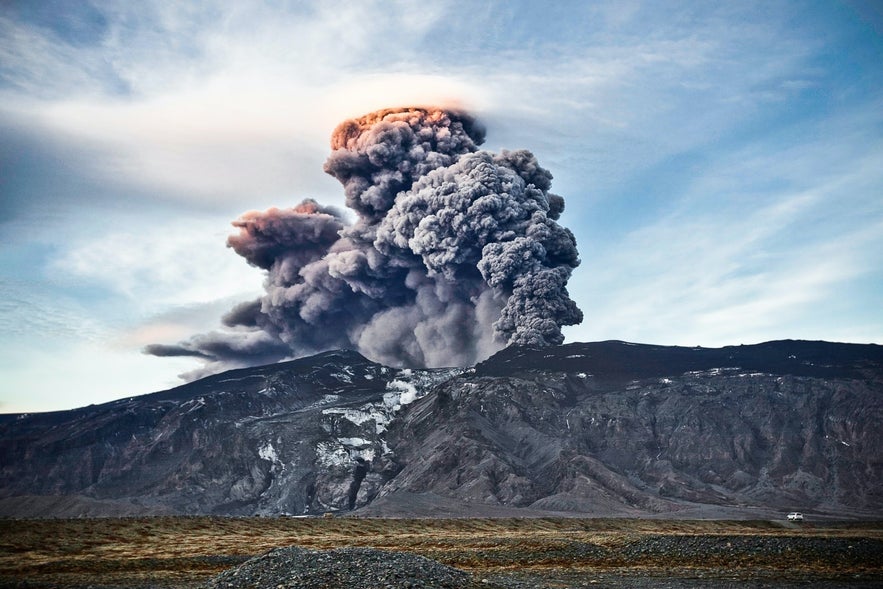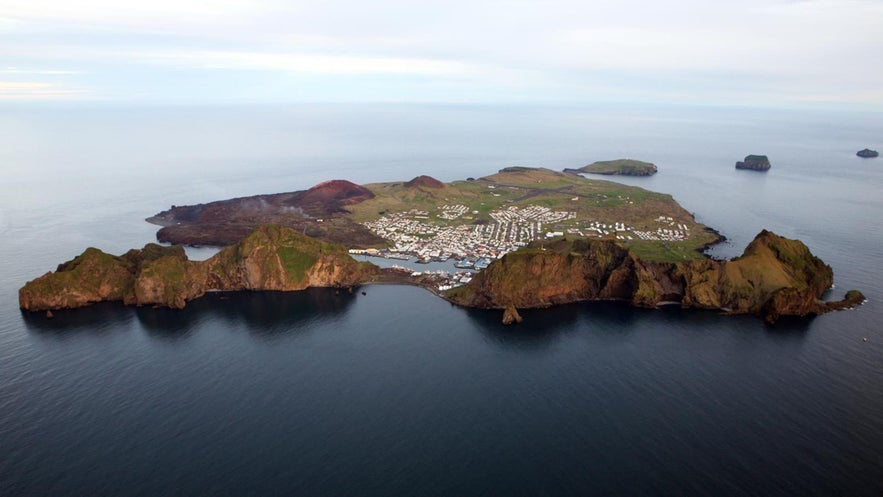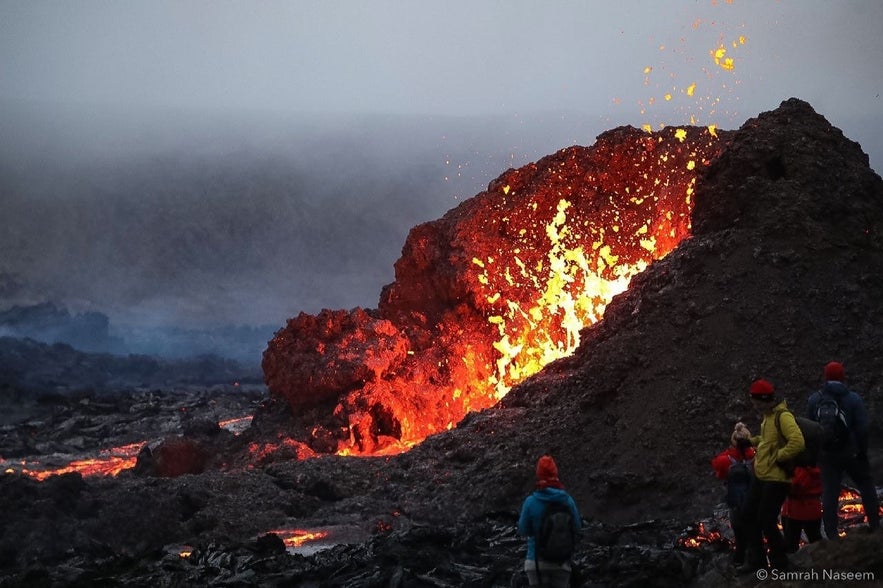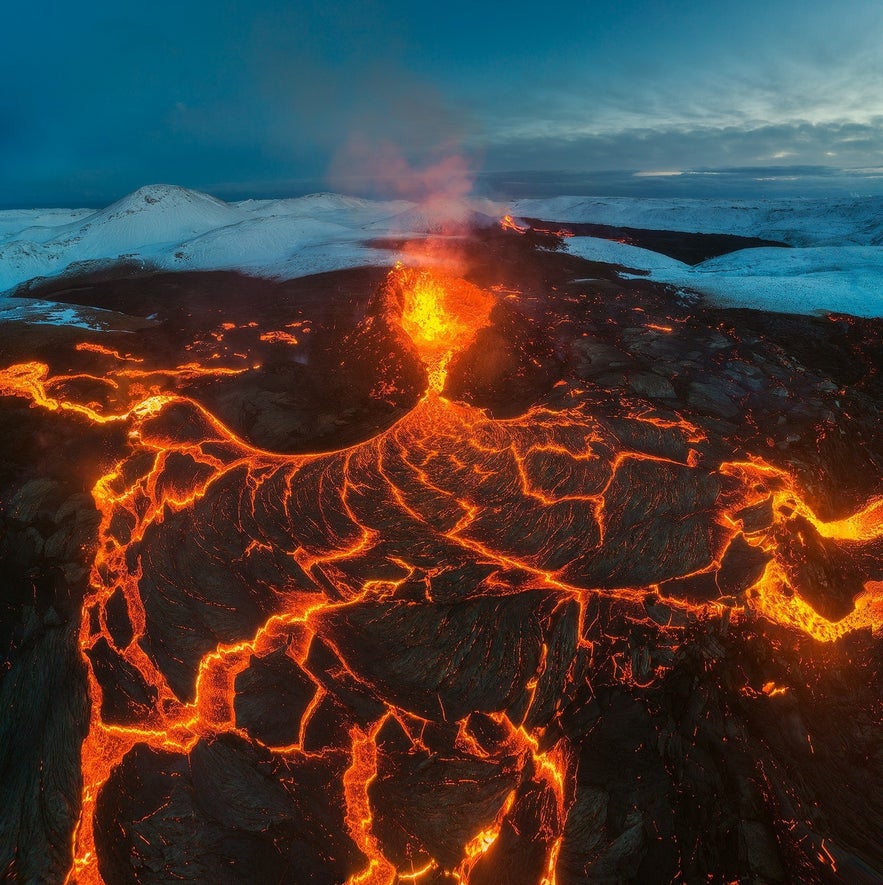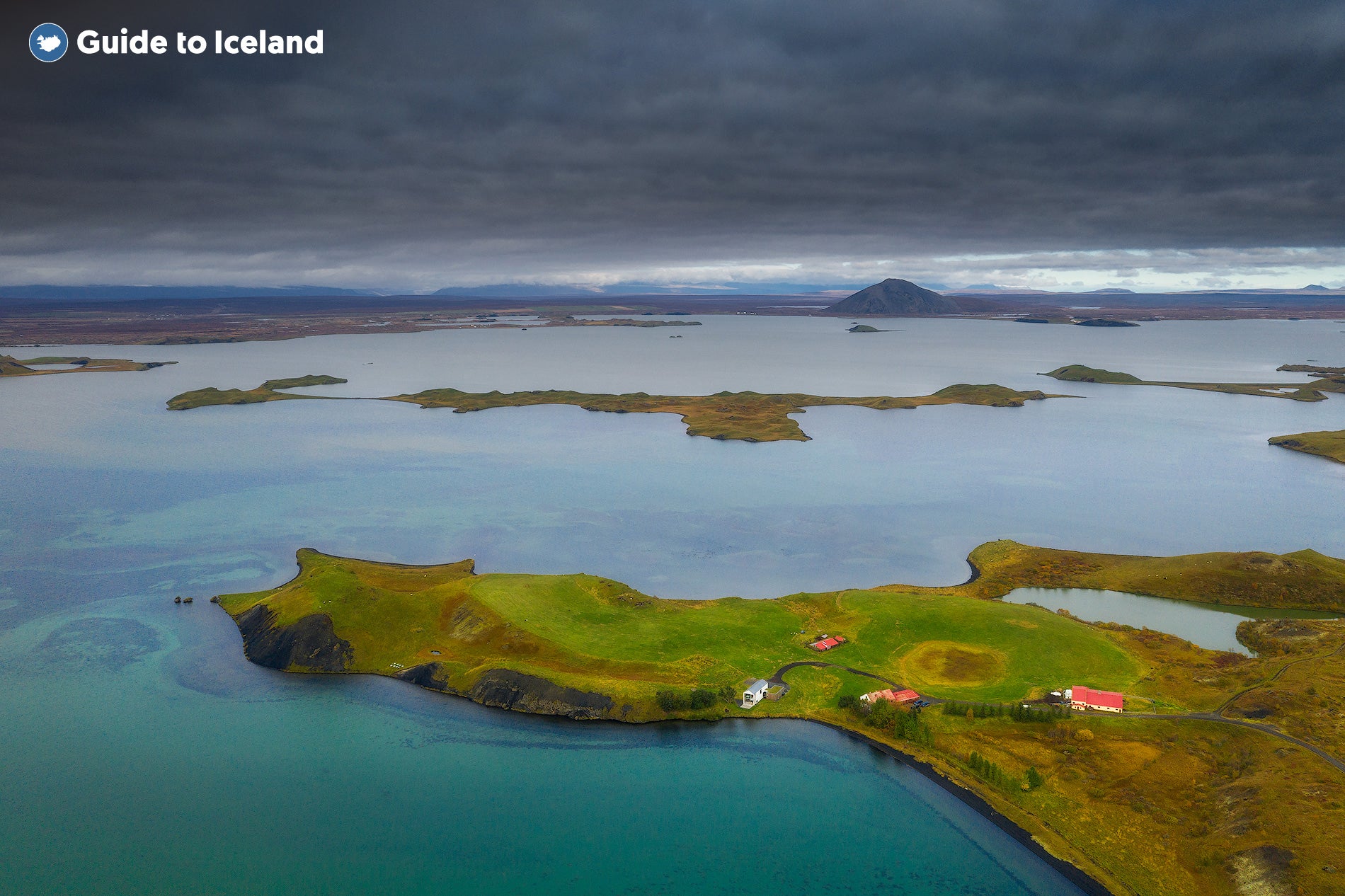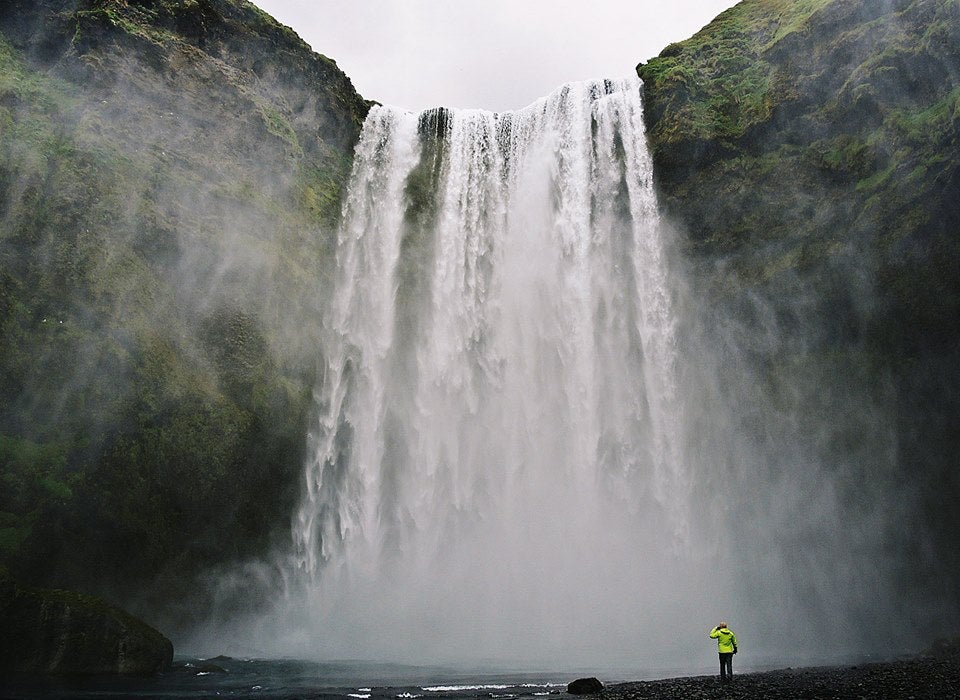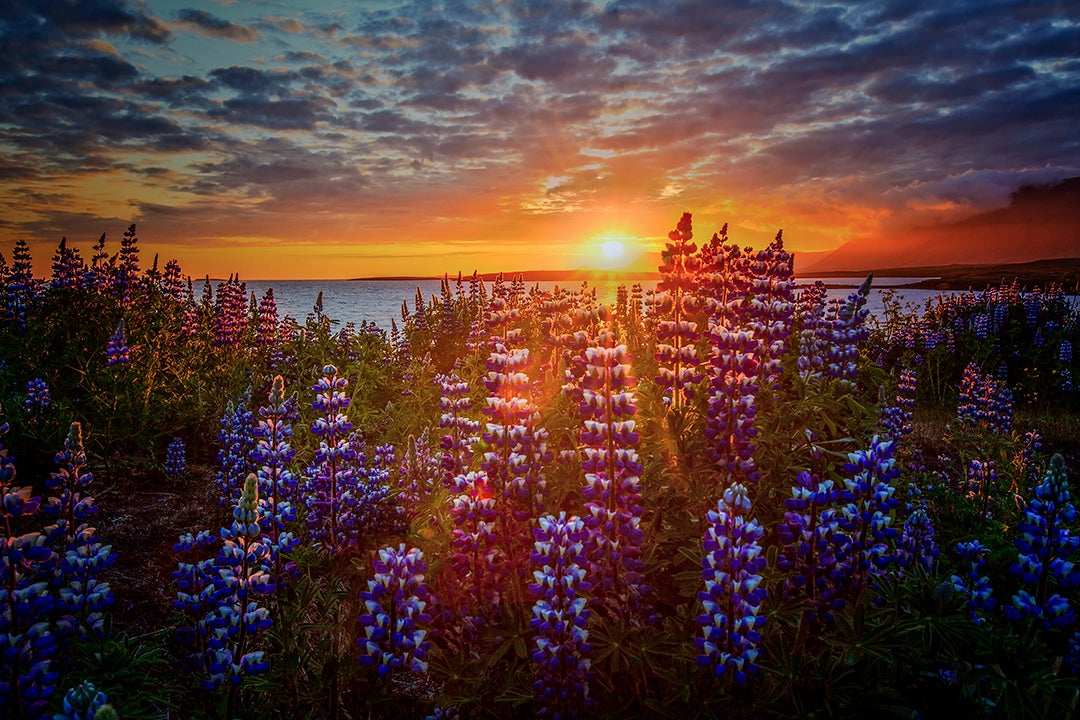Learn about Iceland's volcanic activity and the most famous eruptions in history. Continue reading to learn how you can visit these natural wonders in this complete guide to volcanoes in Iceland.
Iceland is a place of contrasts, where glaciers meet the fiery heat of volcanoes. It's why the country is often called the land of fire and ice, as this clash has shaped a landscape of lava fields, black sand beaches, mountains, geysers, and craters, making it a truly one-of-a-kind destination.
Why You Can Trust Our Content
Guide to Iceland is the most trusted travel platform in Iceland, helping millions of visitors each year. All our content is written and reviewed by local experts who are deeply familiar with Iceland. You can count on us for accurate, up-to-date, and trustworthy travel advice.
Volcano tours offer a chance to witness this raw power up close, while lava cave tours reveal the hidden tunnels and chambers formed by ancient eruptions beneath the surface.
Thousands flock to Iceland to witness its volcanoes and the marvels they create. During eruptions, like the most recent ones on the Reykjanes Peninsula, even more people visit for their chance to see one of the Earth's most dramatic and beautiful phenomena, especially with experiences like a volcano helicopter tour.
Here’s everything you need to know about Iceland’s volcanic wonders and the landscapes they create.
Key Takeaways
-
Iceland's volcanoes have shaped its landscape and history, with some eruptions causing devastating effects.
-
The deadliest eruptions, like Laki in 1783, had global consequences, impacting the climate and human populations.
-
Ongoing volcanic activity makes Iceland a prime location for studying and witnessing eruptions.
-
Visitors can safely explore Iceland’s volcanoes through volcano tours or lava cave tours.
How Many Volcanoes Are There in Iceland?
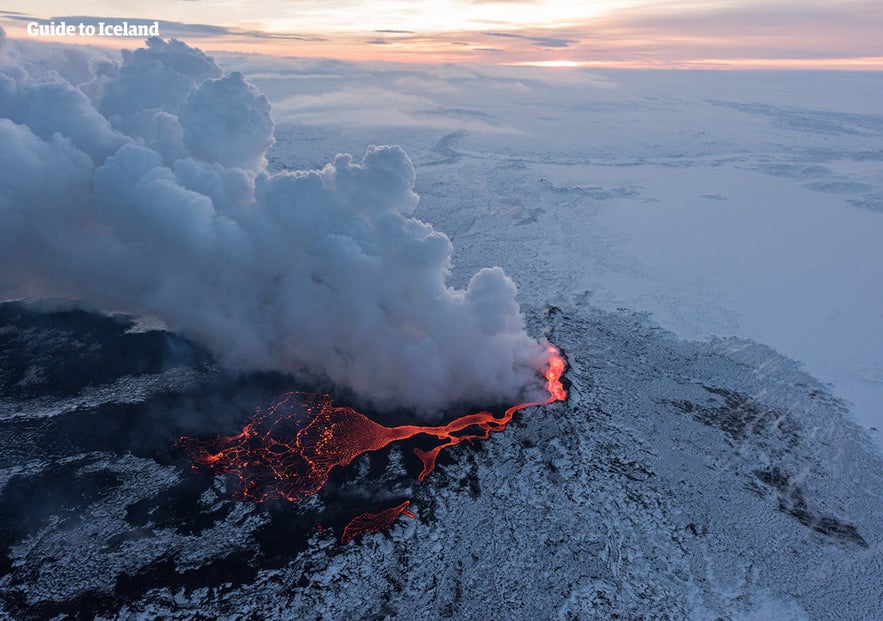
There are approximately 130 active and inactive volcanoes in Iceland. Most of these volcanoes are active, with the only dormant sites found in Iceland's Westfjords.
The Westfjords no longer have any activity because it's the oldest part of Iceland's landmass. This area formed around 16 million years ago and has been pushed away from the Mid-Atlantic Ridge.
Thus, the Westfjords are the only part of the country that has to heat its water with electricity (rather than using geothermally heated water).
How Many Active Volcanoes Are in Iceland?
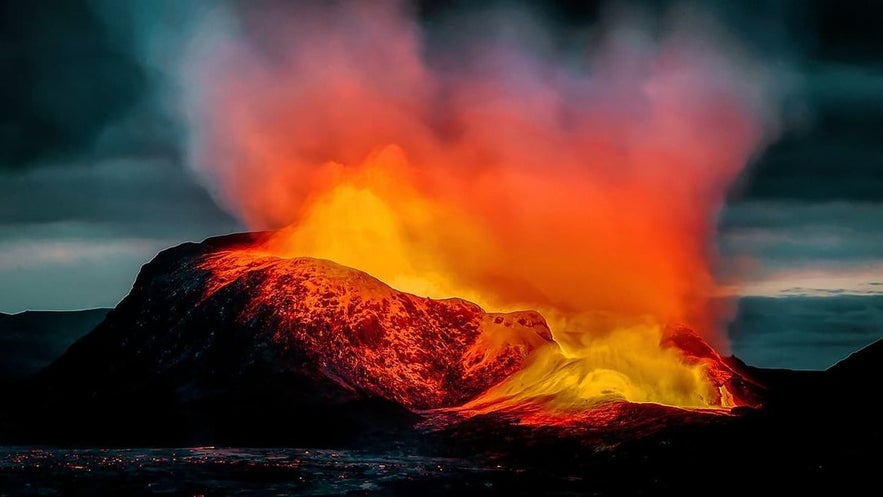 About 32 active volcanic systems can be found under the island in all parts of Iceland other than Westfjords. In addition to being on the Mid-Atlantic Ridge, Iceland is also located above a hot spot.
About 32 active volcanic systems can be found under the island in all parts of Iceland other than Westfjords. In addition to being on the Mid-Atlantic Ridge, Iceland is also located above a hot spot.
A hot spot refers to abnormally high magma activity. Other famous hot spots are Yellowstone National Park and Hawaii. The main active volcanoes in Iceland run along a curved central line roughly from northeast to southwest.
From north to south, examples include Krafla, Askja, the Grimsvotn and Bardarbunga systems beneath Vatnajokull, Hekla, and Katla, along with Heimaey and Surtsey in the Westman Islands. Grimsvotn is the most active volcanic system in Iceland.
Iceland Volcano Map
Here's a map of Iceland's active volcanoes to make it easier to understand. This is just a rough categorization based on geographical zones:
-
The West Volcanic Zone (including the Reykjanes Peninsula)
-
The East Volcanic Zone
-
The North Volcanic Zone
-
The Westman Islands
-
The Snaefellsjokull Belt
-
The Oraefajokull Belt
Reykjavik sits at the eastern edge of the Reykjanes Peninsula, adjacent to the Reykjanes volcanic belt in Southwest Iceland. There are several active systems near the capital, including the recent Fagradalsfjall eruptions and the Sundhnukagigar crater row.
They are the nearest active eruption areas to Reykjavik, roughly 30–35 miles (50–55 kilometers) from the city, and their recent eruptions have not affected daily life in Reykjavik.
Why Is Iceland So Volcanic?
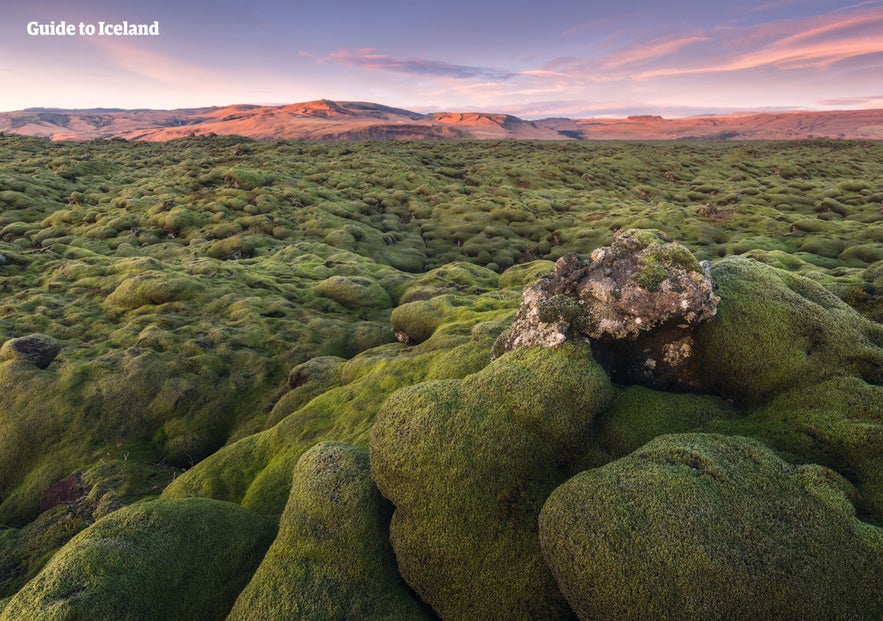
Iceland is a product of volcanism as it sits directly across the Mid-Atlantic Ridge. This ridge separates the North American and Eurasian tectonic plates, and Iceland is one of the few places on Earth where it can be seen above sea level.
Tectonic plates are the crust and the uppermost part of the Earth's mantle. Due to the mantle's convection currents, tectonic plates can move together to form mountains or apart to form oceanic crust.
There are 15 major tectonic plates, and the North American and Eurasian plates are two of the biggest.
These two tectonic plates are divergent, meaning that they pull away from each other. As they do so, magma from the mantle rises to fill the space between them, producing volcanic eruptions. This occurs down the length of the rift, as can be noted on other volcanic islands such as those of the Azores and St. Helena.
There are many places in Iceland where you can witness parts of the ridge, such as the Reykjanes Peninsula and the Lake Myvatn area.
However, Thingvellir National Park is the best as you can stand in a valley between the plates and see the continents' walls on opposite sides of the park. Due to this divergence between the plates, the valley widens by approximately 1 inch every year.
Top 9 Most Famous Iceland Volcanoes
Given that Iceland has over 130 known volcanoes, it would take a while to see them all. So we've compiled a list of nine volcanoes we recommend that all visitors to Iceland experience firsthand.
9. Eyjafjallajokull: Iceland's Most Famous Volcano
Most people are familiar with the Eyjafjallajokull Volcano after its eruption in 2010 caused a massive disruption in European flights. It may have been a nuisance for many air travelers, but it was a relatively minor event compared to Iceland's most significant eruptions in the past.
The 2010 eruption was the largest one from the Eyjafjallajokull Volcano to date. There had been a few previous eruptions but nothing of a similar scale.
A small but long eruption took place between 1821 and 1823. There were earlier eruptions in 1612-1613 and 920, but little is known about them.
The Eyjafjallajokull and Katla systems are neighbors, and some past eruptions have occurred within a similar timeframe. However, an eruption at Eyjafjallajokull does not reliably trigger an eruption at Katla. Katla’s last confirmed eruption was in 1918.
The Eyjafjallajokull Volcano has become a popular attraction following its eruption in 2010. During the early days of the eruption, thousands of people made their way to Iceland to marvel at it, with many hopping on planes and helicopters for the best views.
We recommend this 5-hour Super Jeep glacier tour to Eyjafjallajokull Volcano for a full viewing experience.
8. Thrihnukagigur: The Only Volcano You Can Enter
The only volcano in the world with a magma chamber you can enter is the Thrihnukagigur Volcano in Iceland. Dormant for about 4,000 years, there's no risk of an eruption here, making the tours as safe as they are mesmerizing.
Overall, the Thrihnukagigur Volcano's magma chamber is about 5,300,000 cubic feet (150,000 cubic meters). It's entered by boarding a small mining lift at the entrance, which will lower you down 390 feet (120 meters) to the enormous cavern base.
The bottom covers roughly the same area as a football field, giving you plenty of space to explore. To put these numbers into perspective, the Statue of Liberty can easily fit inside the Thrihnukagigur Volcano.
Besides its scale, the most impressive thing about this magma chamber is its vivid coloration. The lava within the chamber held many elements brought up from the Earth's mantle, and their vibrant shades are on full display. The chamber walls are dyed red, green, and yellow by iron, copper, and sulfur.
You'll need to book this tour inside the Thrihnukagigur Volcano to explore this magnificent volcano.
7. Grimsvotn: Iceland's Deadliest Volcano
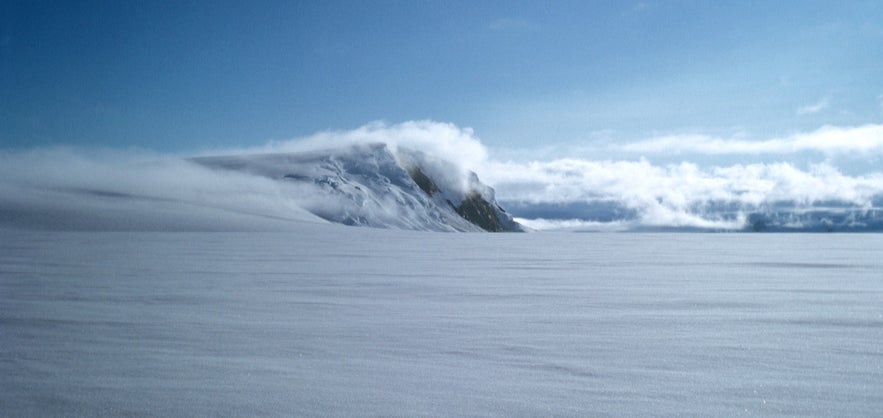 Photo from Wikimedia, Creative Commons, by Roger McLassus.
Photo from Wikimedia, Creative Commons, by Roger McLassus.
The Grimsvotn Volcanic system is the most volatile volcanic system in Iceland. Located under the Vatnajokull Glacier in the southeast, its craters are largely invisible beneath the ice. However, the resulting ash clouds can be among the most significant and dangerous when an eruption occurs.
The Laki Volcano, which we cover later in this article, caused worldwide havoc in 1783 and 1784 and is part of this volcanic system. It's one of the hidden wonders of the Icelandic Highlands, and to explore it, we recommend this Super Jeep tour of Fjadrargljufur Canyon and the Lakagigar Craters.
6. Hekla Volcano: The Gateway to Hell
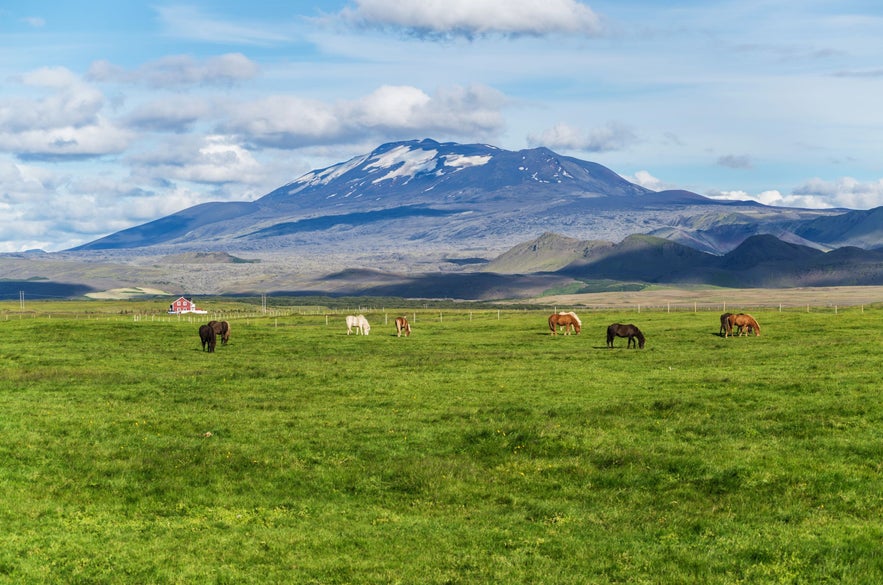
The Hekla Volcano is one of the most famous and active volcanoes in Iceland. In the Middle Ages, it was known as "The Gateway to Hell" due to its regular and explosive eruptions.
However, it's also one of Iceland's least predictable volcanoes, with intervals between eruptions lasting anywhere between nine and 121 years.
Since settlement, Hekla has caused havoc on many occasions, spewing out millions of tons of tephra at a time. Its most powerful eruption was in 1104, though eruptions in 1300, 1693, and 1845 were more destructive to livestock, buildings, and human life.
The last eruption was on February 26, 2000, but it was relatively minor. Book this horse riding summer tour near Hekla Volcano for a unique experience with breathtaking views.
5. Katla Volcano: Eyjafjallajokull Volcano's Explosive Neighbor
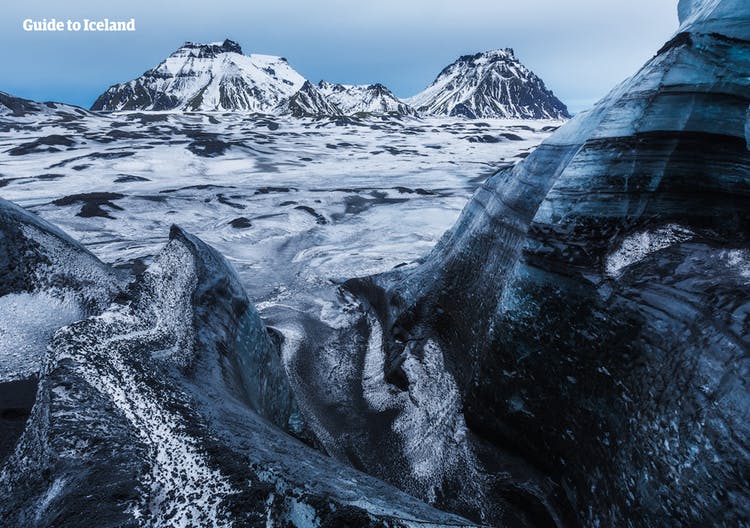
Katla Volcano is one of Iceland's most powerful and explosive volcanoes. It has been rumbling for years, and authorities monitor it closely. The volcano sits beneath the Myrdalsjokull Glacier in South Iceland and is notorious for its vast ash clouds and catastrophic jokulhlaups.
Despite its activity, you can explore the area safely on the Katla ice cave tour, which takes you inside a stunning glacier cave formed by the volcano’s heat.
4. Snaefellsjokull Volcano: The Door to the Center of the Earth
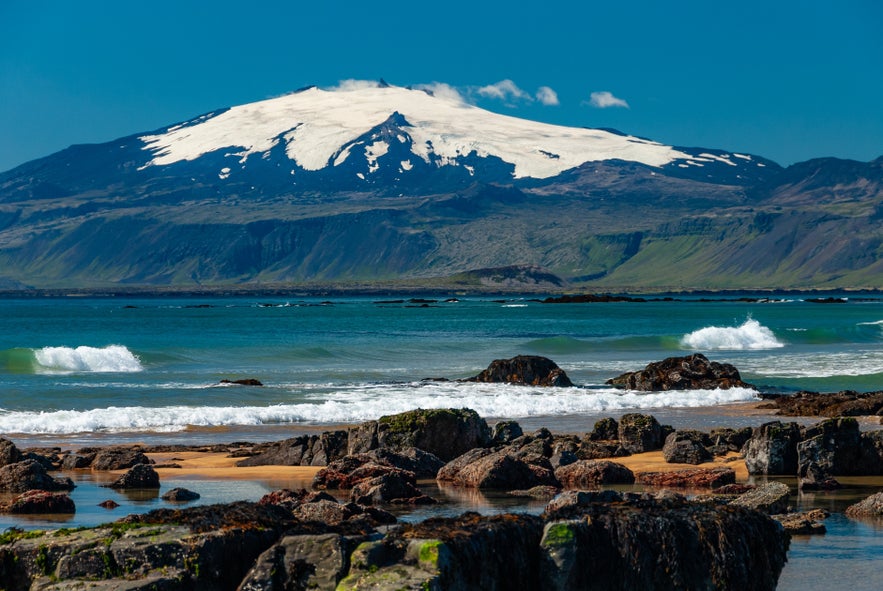
The Snaefellsjokull Volcano is one of Iceland's most visited and beloved volcanoes. Located on the Snaefellsnes Peninsula's tip, it provides a dramatic backdrop to many sites in the area and is a national park in its own right because of its beauty.
Snaefellsjokull Volcano is particularly notable for its role in culture. Many artists have been inspired by its beauty, including Nobel-prize-winning author, Halldór Laxness, who used it as a key setting in the book “Under the Glacier.”
Jules Verne also featured it in the novel “A Journey to the Center of the Earth,” imagining a cave leading to the Earth's core.
Perhaps more curiously, thousands believed that at midnight on November 5, 1992, aliens would use the volcano as a landing site. A huge crowd gathered, including camera crews from around the world, for what turned out to be a relatively uneventful night.
Check out this Snowcat tour on Snaefellsjokull Glacier for an active opportunity to see the volcano up close.
3. Askja: Iceland's Hot Spring Volcano
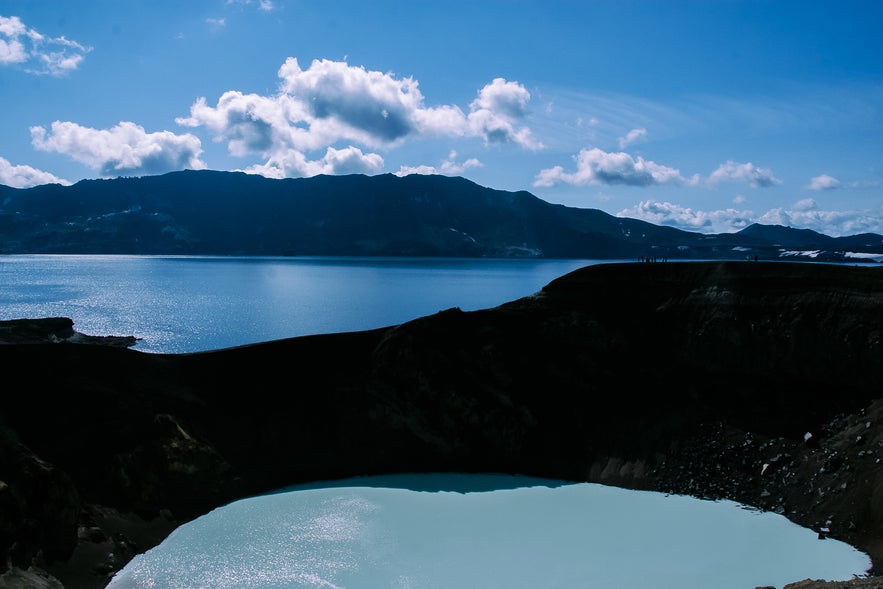
The Askja Volcano was unknown until a massive eruption began in 1875. The ash was particularly heavy, poisoning the land and killing livestock across much of the country, especially in the Eastfjords.
Its effects were felt as far away as Norway and Sweden. Like the 1784 Laki eruptions a century earlier, it prompted many Icelanders to emigrate to North America.
Today, Askja Volcano is best known for the vast lake in the caldera formed in this eruption. Despite its altitude, it remained warm for years; today, it's frozen most of the year.
Check out this Highland tour to Holuhraun Volcano and Askja Caldera for an incredible sightseeing opportunity from Lake Myvatn.
2. Krafla: The Cold Crater Lake Volcano
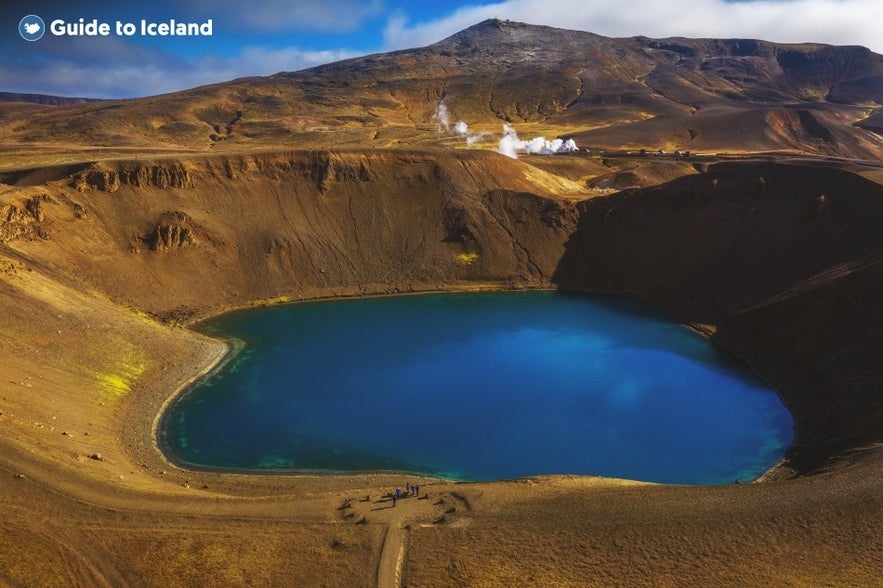
Krafla Volcano is a particularly active volcano in North Iceland, having erupted 29 times since settlement. Nine of these eruptions occurred between 1975 and 1984. It's also renowned for its crater lake, also called Viti.
The main difference between the two is that Viti in Krafla Volcano is a cold lake (beautifully colored in emerald blue), while the Viti in Askja Volcano is geothermally heated during the warmer months.
Krafla Volcano is a popular attraction in the Lake Myvatn area, visited on many tours due to its proximity to the Namafjall Geothermal Area. It's 2,684 feet (818 meters) high at its peak, 1.25 miles (two kilometers) deep, and its caldera has a diameter of 6.2 miles (10 kilometers).
1. Hverfjall: Easy Hike-Around Volcano
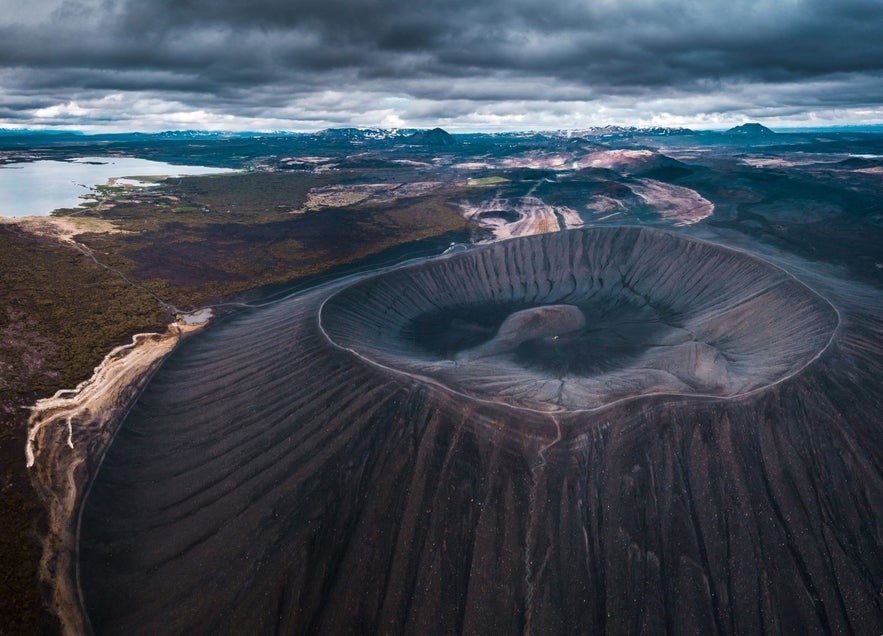
Another popular volcano in North Iceland is called Hverfjall or Hverfell (both are accepted names). It has not erupted for about 4,500 years, despite the volcanic activity around it.
The Hverfjall Volcano is well-loved because it's easy to hike. The crater is easily accessible from the Ring Road and is just 0.62 miles (1 kilometer) in diameter. It only takes about an hour to walk the rim of this popular tephra cone, and it's situated right next to Lake Myvatn.
We recommend this sunrise volcano hiking tour at Mount Hverfjall with transfers from Lake Myvatn for an unforgettable experience.
Notable Icelandic Volcano Eruptions
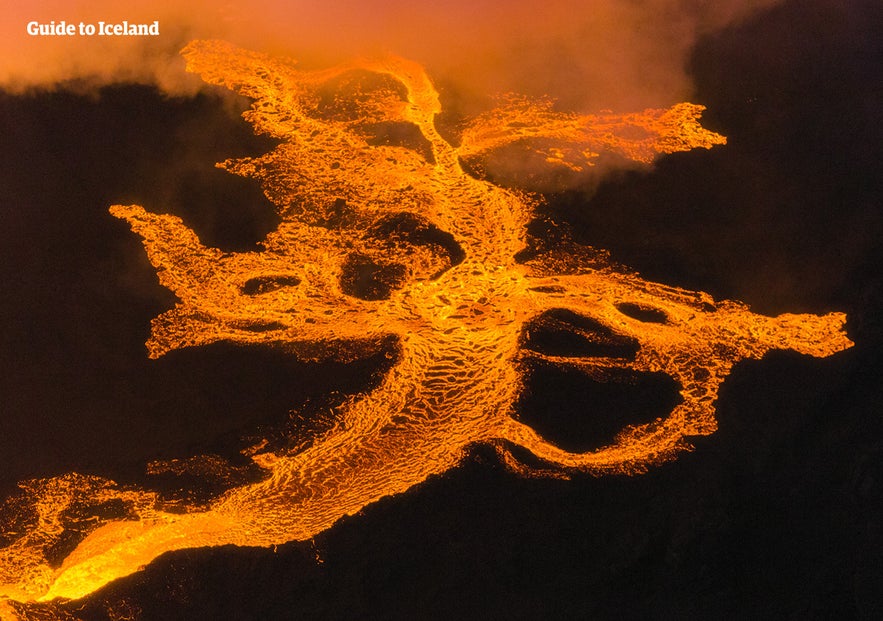
Here are some of the most notable volcanic eruptions across Iceland and how they shaped the geography and history of Iceland.
The 2023–2025 Sundhnukagigar Eruptions in Iceland
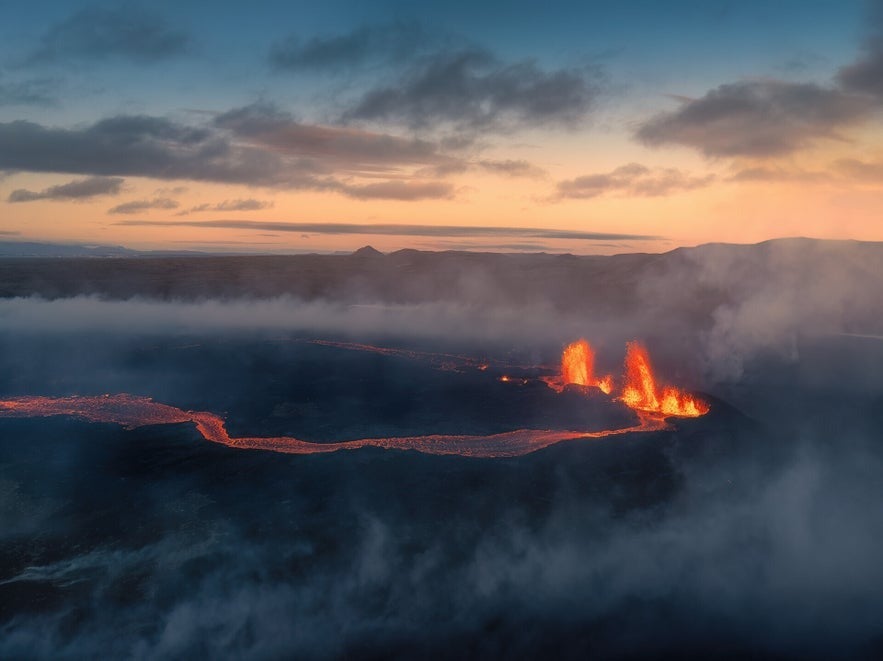
In December 2023, an eruption began at Sundhnukagigar, just northeast of Grindavik, following weeks of seismic activity. The lava came dangerously close to the town, the Svartsengi Power Station, and the Blue Lagoon but ultimately flowed away from populated areas. It ended on December 21st and was considered a best-case scenario despite its power.
On January 14th, 2024, two fissures opened near Mount Hagafell. Lava from the southern fissure reached Grindavik, destroying three homes before the flow stopped.
A new eruption followed on February 8th, with a 1.8-mile-long (3-kilometer) fissure forming farther north. Though it didn’t reach Grindavik, it burst a hot-water pipe, cutting off hot water to the region for four days. It ended by February 10th.
The most powerful eruption came on March 16th, with a 2.2-mile-long (3.5-kilometer) fissure sending lava south and west. Barriers helped redirect the flow, though a mine was destroyed. This eruption continued at lower intensity until May 8th.
Another event began on May 29th, with lava plumes reaching 150 feet (50 meters). The fissure widened to 2.1 miles (3.4 kilometers) before activity dropped. The eruption ended on June 22nd.
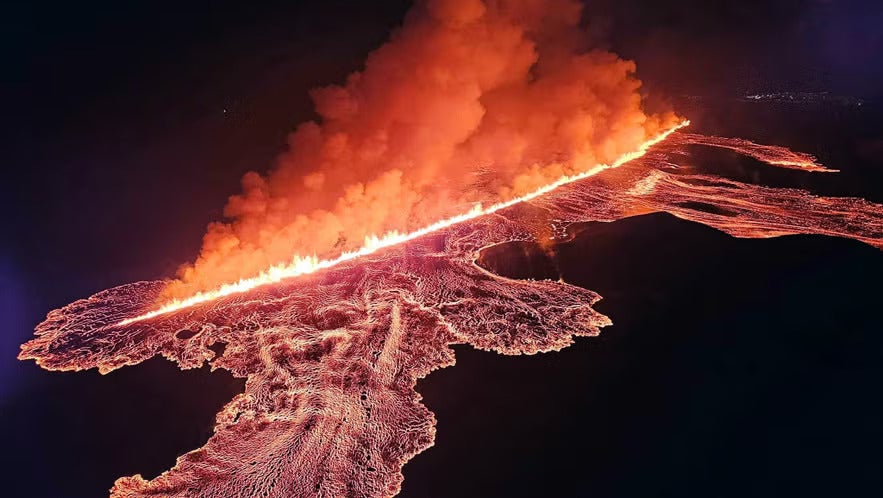 On August 22nd, a 2.5-mile-long (4-kilometer) fissure opened in an old U.S. military training zone, raising concerns about landmines. The lava flow was slow and the eruption ended on September 5th.
On August 22nd, a 2.5-mile-long (4-kilometer) fissure opened in an old U.S. military training zone, raising concerns about landmines. The lava flow was slow and the eruption ended on September 5th.
A surprise eruption occurred on November 20th, with no major earthquake warning. A 1.8-mile-long (3-kilometer) fissure opened near Sundhnukagigar, prompting rapid evacuations. It was declared over on December 9th.
On April 1st, 2025, another fissure opened near Grindavik. Though part of it breached a protective barrier, the lava stayed outside town. The eruption ended quickly by April 2nd.
Most recently, on July 16th, 2025, a twelfth eruption since 2021 began southeast of Litla-Skogfell Mountain. The fissure, up to 3,300 feet long (1,000 meters), sent lava away from populated areas before slowing down. The eruption lasted for almost a month before being declared over on August 5th.
The Reykjanes Peninsula remains highly active, and further eruptions are expected. Authorities continue to monitor conditions closely, urging residents and travelers to stay informed and follow safety guidelines. As of October 2025, there is no ongoing eruption on the Reykjanes Peninsula; access and advisories can change with little notice, so always follow official guidance.
- Learn all about the eruptions on the Reykjanes Peninsula in Iceland
2023 Litli-Hrutur Volcano Eruption
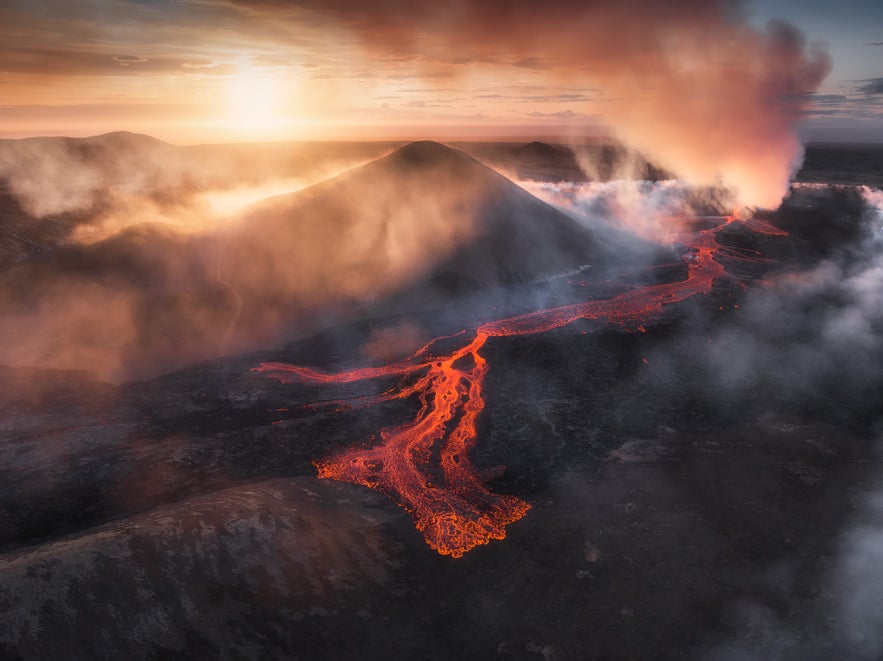 In July 2023, a volcanic eruption started by the Litli-Hrutur Mountain, next to the Fagradalsfjall Volcano on the Reykjanes Peninsula. It was the third eruption in the area in three consecutive years, the first in 2021. Prior, there hadn't been an eruption on the Reykjanes Peninsula for over 800 years.
In July 2023, a volcanic eruption started by the Litli-Hrutur Mountain, next to the Fagradalsfjall Volcano on the Reykjanes Peninsula. It was the third eruption in the area in three consecutive years, the first in 2021. Prior, there hadn't been an eruption on the Reykjanes Peninsula for over 800 years.
The eruption started after a week of constant earthquakes in the area that followed the same patterns as the previous eruptions in 2022 and 2021. This meant that volcanic activity was expected by locals, and once it finally started on July 10, people were excited to see the new fissure.
On the first day, authorities and specialists closed off the area while the situation was being assessed and data was gathered. The next day, a hiking path to the eruption site was established for visitors.
The eruption ended on August 5, 2023, but the aftermath of the volcanic eruption can still be witnessed. This would not, however, be the last of the volcanic activity Iceland would experience in 2023.
2022 Fagradalsfjall Volcano Eruption in Iceland
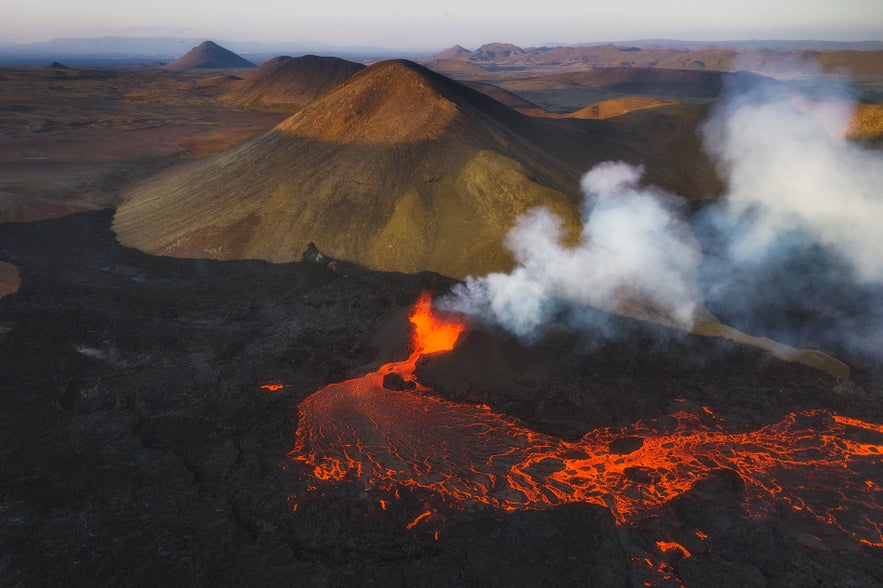 The Fagradalsfjall Volcano erupted for the second time on August 3, and it lasted for three weeks. The eruption took place in Meradalir Valley on the Reykjanes Peninsula, about 0.6 miles (1 kilometer) from the site of the 2021 Geldingardalur Valley eruption.
The Fagradalsfjall Volcano erupted for the second time on August 3, and it lasted for three weeks. The eruption took place in Meradalir Valley on the Reykjanes Peninsula, about 0.6 miles (1 kilometer) from the site of the 2021 Geldingardalur Valley eruption.
The rift zone of the eruption was over 984 feet (300 meters) long, with a steady flow of 66-184 square feet (20-50 square meters) of lava every second when it started, according to the Icelandic Meteorological Office.
In the weeks leading up to the eruption, there had been significant tectonic activity on the Reykjanes Peninsula. Some earthquakes reached as high as 5.2 on the magnitude scale and could be felt in Reykjavik.
On August 3, lava finally reached the surface for the first time since the last eruption ended in September 2021.
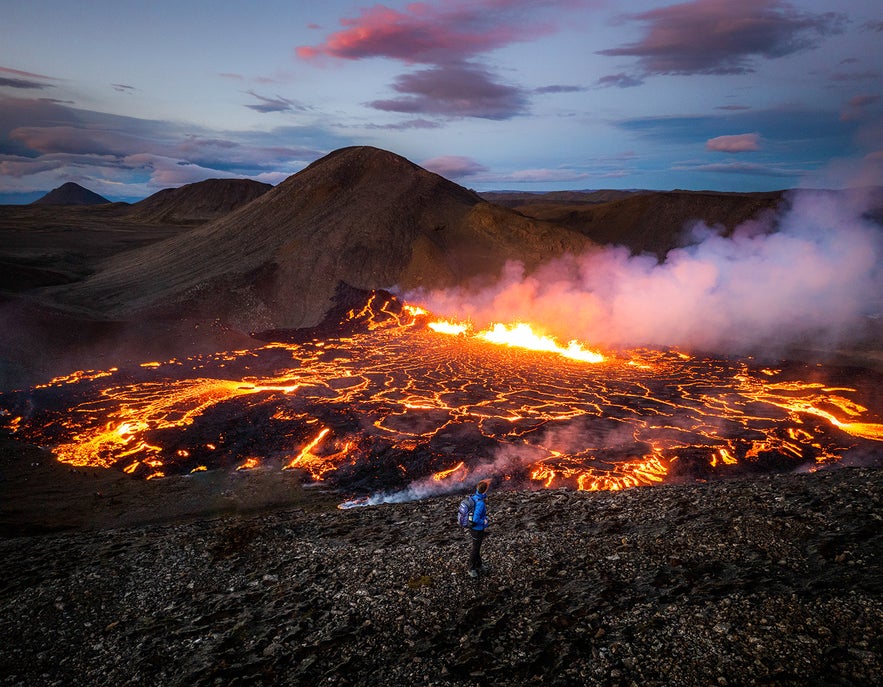 As one can expect from a natural event like this, travelers flocked to see the eruption site with their own eyes. Now, as the eruption has ended, it has created an incredible area of black solidified lava.
As one can expect from a natural event like this, travelers flocked to see the eruption site with their own eyes. Now, as the eruption has ended, it has created an incredible area of black solidified lava.
If you want to see the aftermath of the Fagradalsfjall eruptions, book a day hike to the Fagradalsfjall Volcano.
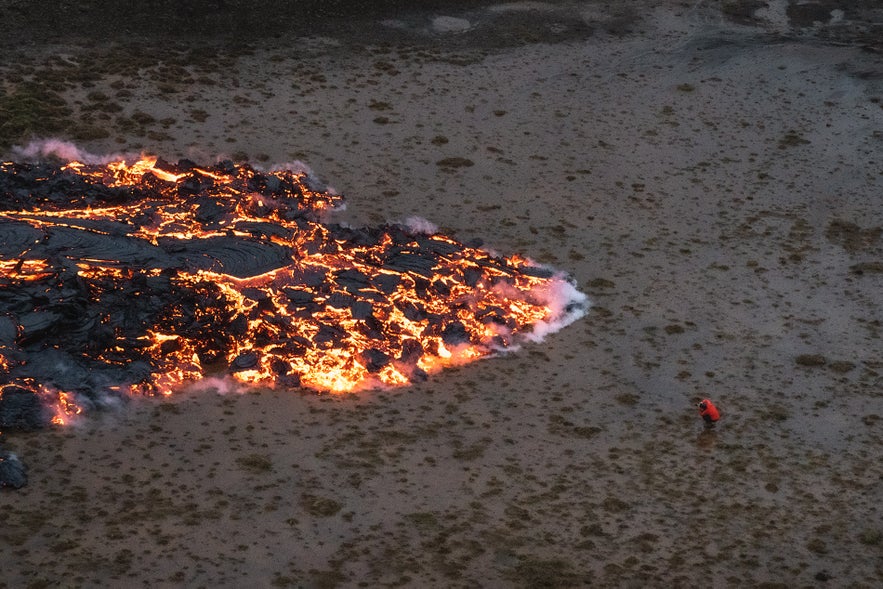
Reaching the Fagradalsfjall Volcano requires hiking for around two hours round-trip, so wear good hiking shoes and warm clothes, as it can get windy in that area. Even if the weather in Iceland is nice when you set out, the conditions can change in a heartbeat.
2021 Fagradalsfjall Volcano Eruption in Iceland
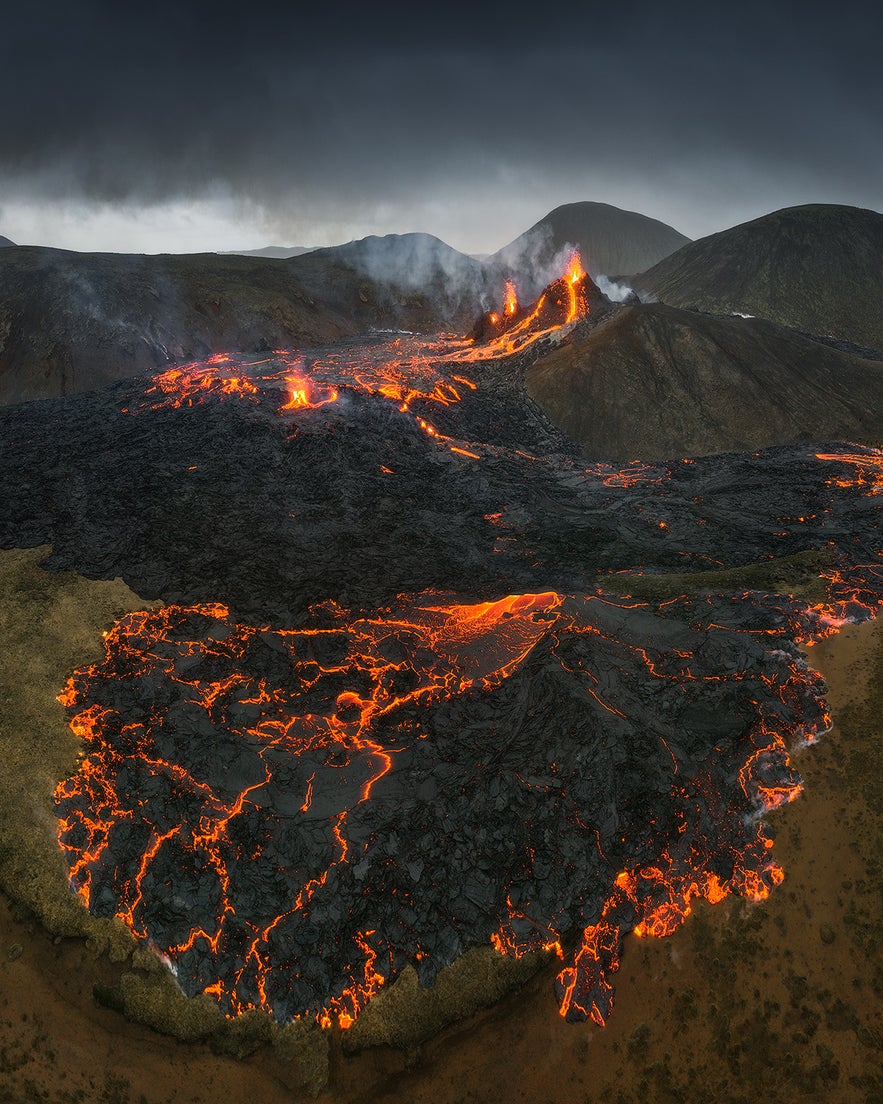
In 2021, Iceland experienced a magnificent eruption on the Reykjanes Peninsula, the land that connects Reykjavik with Keflavik International Airport.
In the weeks before its explosion, tens of thousands of earthquakes shook the capital and surrounding areas, normally a surefire forecast of imminent volcanic activity.
At 9:30 PM on March 19, 2021, a great fissure opened in the Geldingadalur Valley at the Fagradalsfjall Volcano, which is 2,300 feet (700 meters) long and covers 0.4 square miles (one square kilometer).
Although close to the capital, the Fagradalsfjall Volcano is located in a sheltered valley away from any settlements or infrastructure, so it had little effect on daily life for locals.
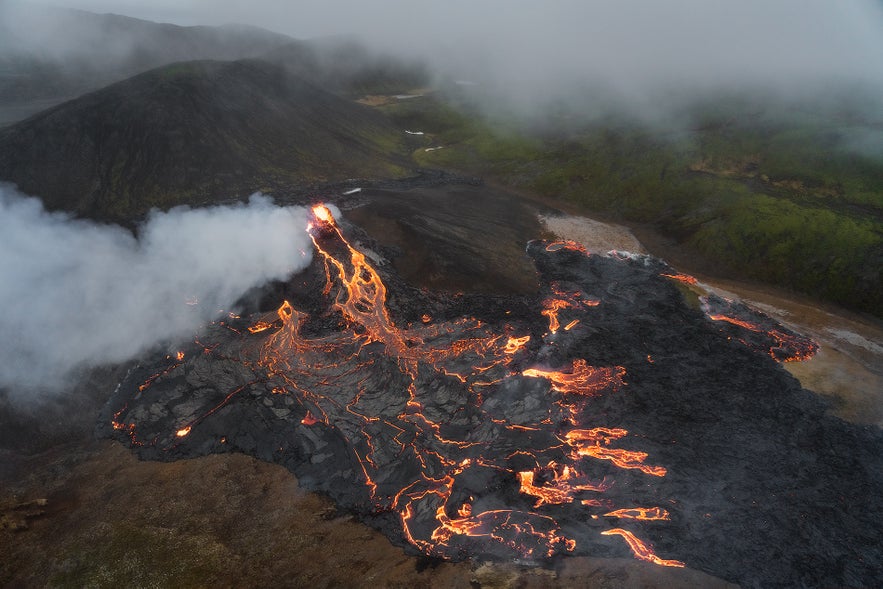
Fagradalsfjall was an effusive rather than an eruptive volcano, meaning its lava oozed and sputtered out of the Earth rather than exploding with ash, fire, and rock.
Of course, the moment Fagradalsfjall Volcano went off, everybody wanted to see it. Even though eruptions are quite common in Iceland, they rarely happen close to the capital.
You can now experience the area through a 12-hour combo tour of Fagradalsfjall Volcano and Sky Lagoon from Reykjavik.
Since its first fissure opened, the primary eruption site at Fagradalsfjall Volcano combined into a single vast crater. As time passed, several new fissures opened around it, showing the volatility and unpredictability of Earth's volcanic forces.
The lava solidified and turned black after the eruption ended in September 2021, but it is still red-hot just beneath the surface. Check out this ultimate guide to the 2021 Fagradalsfjall eruption to learn more.
1784 Laki Eruption
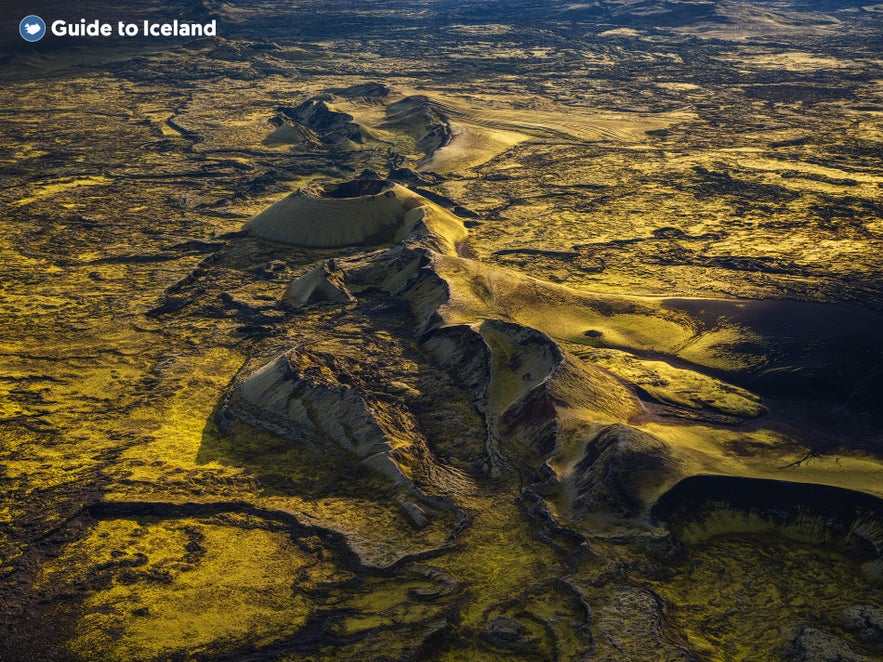 The ash cloud from the Laki Volcano's eruption went across Europe, causing dense fog that shut down ports, led to food shortages, and brought such heat that most foods spoiled. It also poisoned those who worked outside. The United Kingdom lost an estimated 20,000 people to the pollution from the eruption.
The ash cloud from the Laki Volcano's eruption went across Europe, causing dense fog that shut down ports, led to food shortages, and brought such heat that most foods spoiled. It also poisoned those who worked outside. The United Kingdom lost an estimated 20,000 people to the pollution from the eruption.
The consequences were even more dramatic in France. Its impact on the country's climate caused famines so terrible that the 1784 Laki eruption is often considered to be one of the French Revolution's driving catalysts.
In Egypt, the eruption lowered temperatures, leading to a lack of rainfall, a dried-up Nile River, and the loss of a sixth of the country's population as shown in this 2006 study.
All in all, the Laki Volcano caused widespread famine and climate issues, and may have contributed to millions of deaths, though the exact number remains uncertain and debated.
1973 Heimaey Westman Islands Eruption
The Westman Islands are a volcanic archipelago, with Heimaey as the only inhabited island. At the time of the eruption, 5,200 people lived there.
In the early hours of January 22, 1973, a fissure opened on the edge of town and snaked right through its center, tearing apart roads and consuming hundreds of buildings in flowing lava.
Despite happening in the middle of the night in the dead of winter, the island's evacuation was swift and effective. With the population safely on the mainland, Iceland's rescue teams worked with the U.S. troops based in the country to minimize damage.
By constantly pumping seawater onto the lava flow, they redirected it from many houses. This slowed the flow of lava and prevented it from closing the harbor, which would have forever crippled the island's economy.
Though nearly 400 homes were destroyed and the island's infrastructure was heavily damaged, only one person lost their life during the Heimaey eruption.
Today, the town has been rebuilt and is a center for tourists looking to experience whale- or puffin-watching tours or learn about its eruption history. You can choose from some great accommodation options in the Westman Islands to enjoy all the islands have to offer.
How Often Do Volcanic Eruptions Occur in Iceland?
Volcanic eruptions in Iceland are relatively regular yet unpredictable occurrences. Historically, Iceland averages an eruption every few years, but activity clusters and quiet periods both occur. Since 2021, the Reykjanes Peninsula has seen unusually frequent eruptions compared with the 20th-century average.
Before the Litli-Hrutur and Fagradalsfjall Volcanoes, Iceland's most recent known eruption was the Holuhraun Volcano in the Highlands in 2014.
Grimsvotn Volcano had a short eruption in 2011, and, more famously, the Eyjafjallajokull Volcano caused a lot of travel disruptions back in 2010.
The word "known" is used because there have been several suspected subglacial volcanic events at different locations around the country that did not break the ice. Examples include activity at Katla in 2017 and a subglacial event at Hamarinn in 2011.
How Dangerous Are Volcanic Eruptions in Iceland?
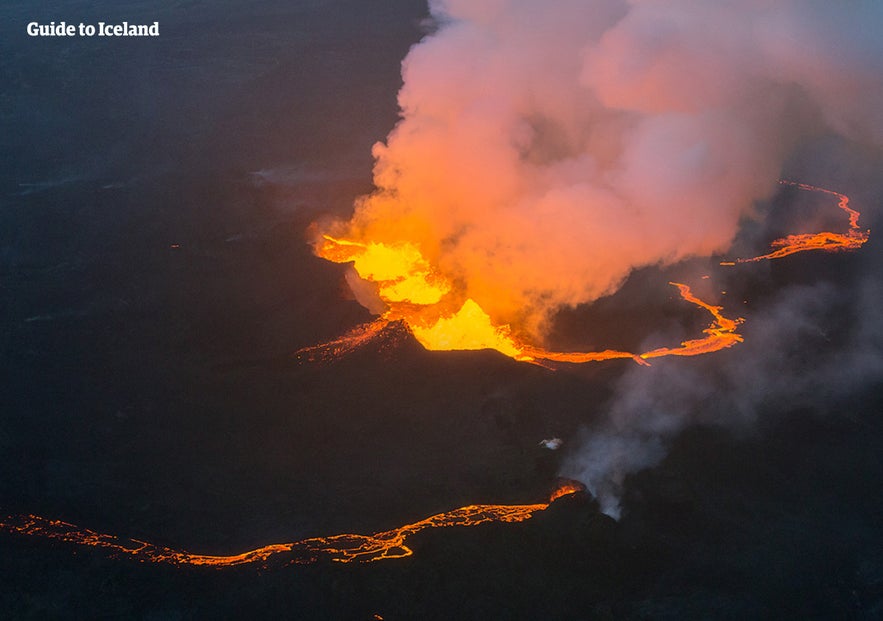
As much as the prediction and response to Icelandic volcano eruptions have improved, there are still some dangers travelers should be aware of during an eruption:
-
Should an eruption occur during your stay, it's essential to be aware of the wind's direction. Even an eruption in the Highlands can affect the air quality in Reykjavik if the winds are unfavorable, causing respiratory problems in children, older adults, and those prone to them.
-
It's recommended that people remain inside with the windows closed when the toxicity levels are high. You can see any warnings about eruptions and air quality on the Icelandic weather website. For travel alerts and closures, also follow the official guidance from local authorities.
The Danger of Death by Iceland Volcano Eruptions
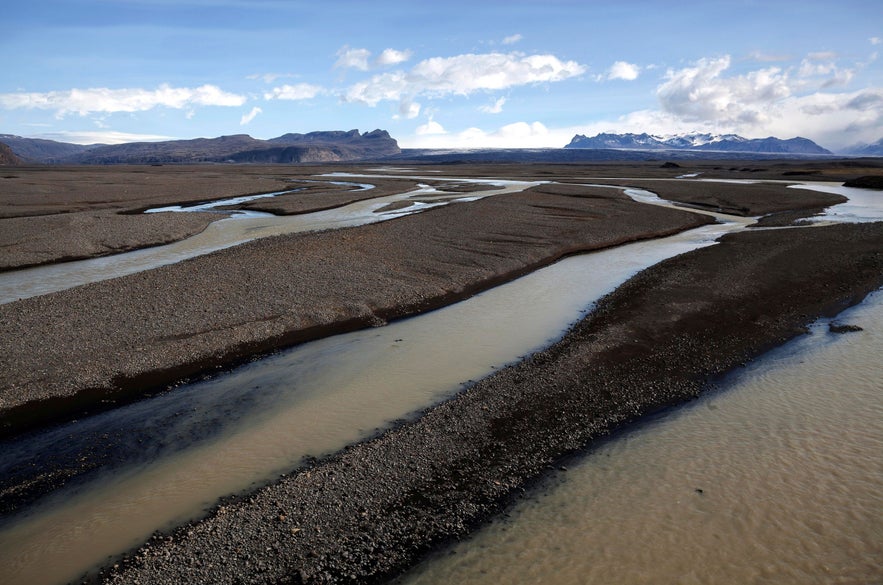
The black sand plains of Skeidararsandur, located near Skaftafell National Park, are shaped by glacial floods from the Vatnajokull Glacier.
The threat to human life during volcanic eruptions in Iceland nowadays is minimal. Seismic stations around the country are excellent at predicting eruptions. If a significant volcano such as Katla or Askja shows signs of rumbling, the areas are quickly restricted and closely monitored.
Most towns are far from active volcanoes due to the good sense of early settlers. For example, the South Coast of Iceland has very few towns and villages since major volcanoes like Katla and Eyjafjallajokull sit close by.
As both of these peaks are under glaciers, the eruptions can cause enormous glacial floods that wipe out anything between them and the ocean. This causes much of the south to look like a black-sand desert.
The Danger of Glacial Flood Jokulhlaups
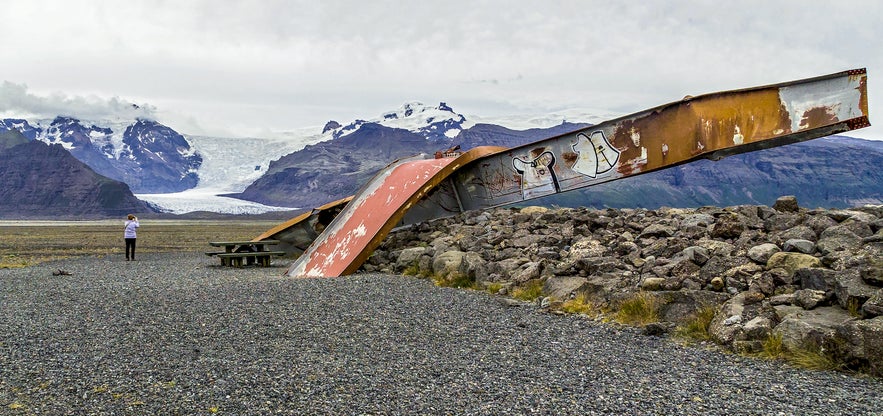
Remains from a steel bridge destroyed by a glacier flood in 1996, with Skaftafell National Park in the background.
These glacial floods (or “jokulhlaups” as they're called in both Icelandic and English) remain one of the most dangerous aspects of Iceland's volcanoes due to their unpredictability. Subglacial eruptions can occur without anyone knowing, and flash floods can happen seemingly without warning.
Science is constantly improving, allowing experts to monitor and respond to potential jokulhlaups more effectively. In July 2024, a glacial flood from the Myrdalsjokull Glacier tore apart a section of Iceland’s Ring Road, but thanks to rapid repairs, it was quickly restored within two days.
This serves as a reminder of why travelers should never drive on closed roads, even in summer when no immediate hazards are visible. Conditions can change rapidly, and closures are in place for safety.
Though most volcanoes are far from population centers, the unexpected can still occur. When it has, Iceland's emergency measures have been incredibly effective, as was the case with the evacuations following the 1973 eruption of the Heimaey Volcano in the Westman Islands.
Broader Impact of Iceland Volcanic Eruptions
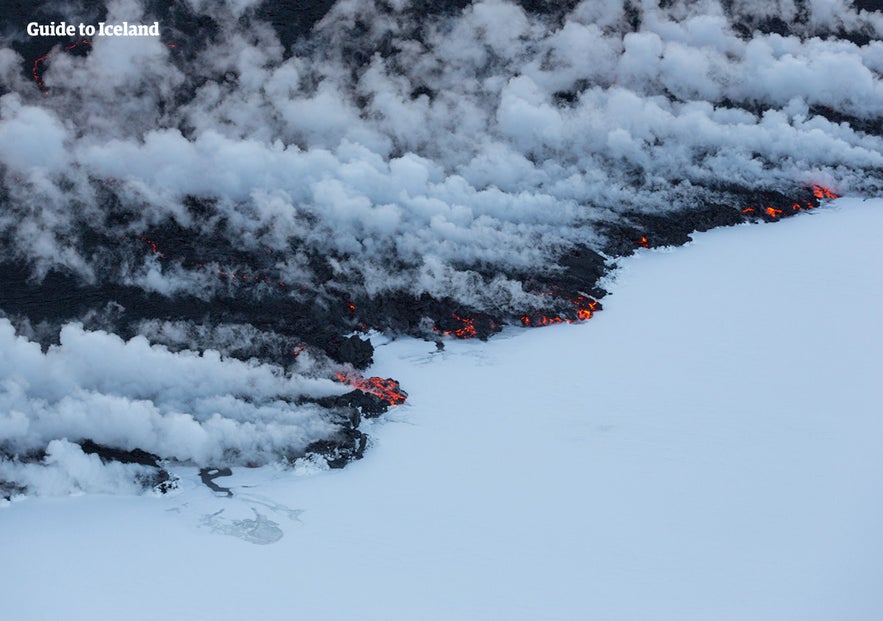
Though the threat to human life in an Icelandic eruption is very low, its broader impacts can still be enormous. Eruptions in Iceland are major world events that can lead to dramatic consequences, even hundreds of miles away.
The elements brought up from the depths of the Earth in these eruptions can poison crops and livestock, thus crippling those who make a living off the land.
Holuhraun Volcano was blamed for the mass death of thousands of sheep across the country in 2015, an event that seriously threatened many Icelandic farmers' livelihoods.
The ash clouds produced by Iceland's volcanoes can also wreak havoc. When the Eyjafjallajokull Volcano erupted in 2010, flights were grounded across Europe, causing noticeable economic harm.
This, however, was a relatively minor consequence compared to previous ash clouds.
What Was Iceland's Worst Eruption?
The most catastrophic Icelandic eruption in terms of human life was undoubtedly the 1783-1784 Laki Volcano eruption mentioned above. It impacted the climate and almost tore the nation of Iceland apart.
Due to the sheer volume of ash, crops across the country were rendered entirely inedible, and the rivers were poisoned. It wiped out half of the livestock, and a third of Icelanders lost their lives to the resulting famine, which is called the "mist hardships" or "móðuharðindin" in Icelandic.
In the following decades, another third left the country, most emigrating to North America in hopes of a prosperous new life far from what appeared to be a dying island.
How Does Iceland Use Its Volcanoes?
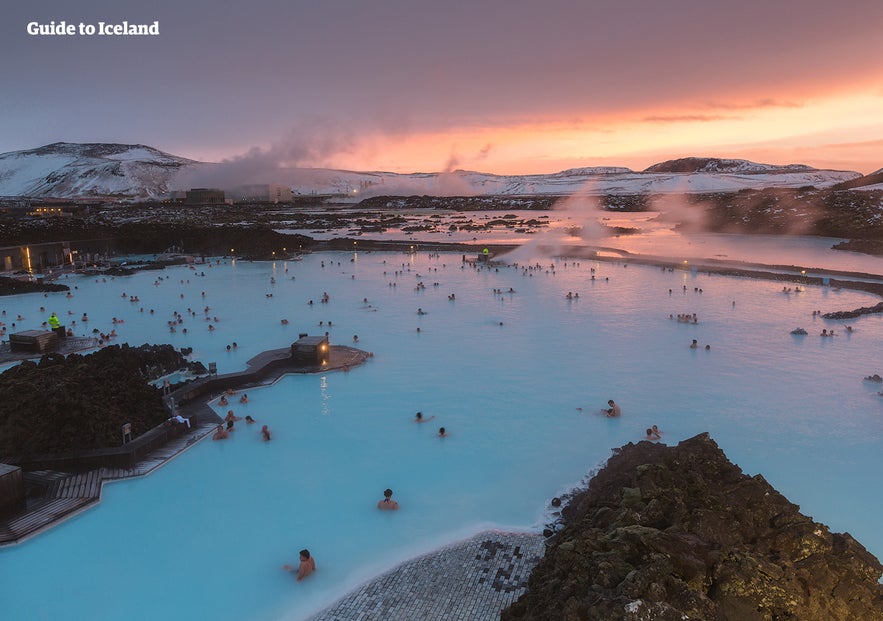
Though the threat of an eruption and concern for its consequences are constants in the Icelandic psyche, Iceland wouldn't be half the country it is today without the volcano systems and geothermal energy.
Geothermal Energy From Icelandic Volcanoes
Much of Iceland's economy and infrastructure relies on the geothermal forces at work here. The vast majority of the country's hot water is pumped directly from the Earth to people's faucets and radiators, allowing for cheap, environmentally friendly heating.
Vegetables, fruits, and herbs are grown year-round in heated greenhouses, allowing fresh produce even in the dead of winter.
Iceland also produces roughly 30% of its electricity at geothermal power stations. As the rest is hydroelectric, Iceland is one of the world's only countries that almost entirely uses renewable electricity sources.
However, this does not mean that the potential of Icelandic volcanoes is always used for good. Heavy industry, particularly aluminum smelting, is slowly increasing in Iceland as foreign entities see the potential in such a tremendous, free-flowing heat source.
Iceland Volcano Tourism
Many credit the 2010 eruption of Eyjafjallajokull Volcano with Iceland's recent boom in tourism, though it crippled the aviation industry at the time.
As the volcano's name tangled the tongues of newscasters around the world, millions were shown footage of this country at its most raw, dramatic, and beautiful, inspiring them to witness it further.
Therefore, it's little wonder that much of the tour industry has built up around exploring volcanoes and volcanic regions. These excursions come in a wide variety of forms.
Adventure Tours of Iceland Volcanoes
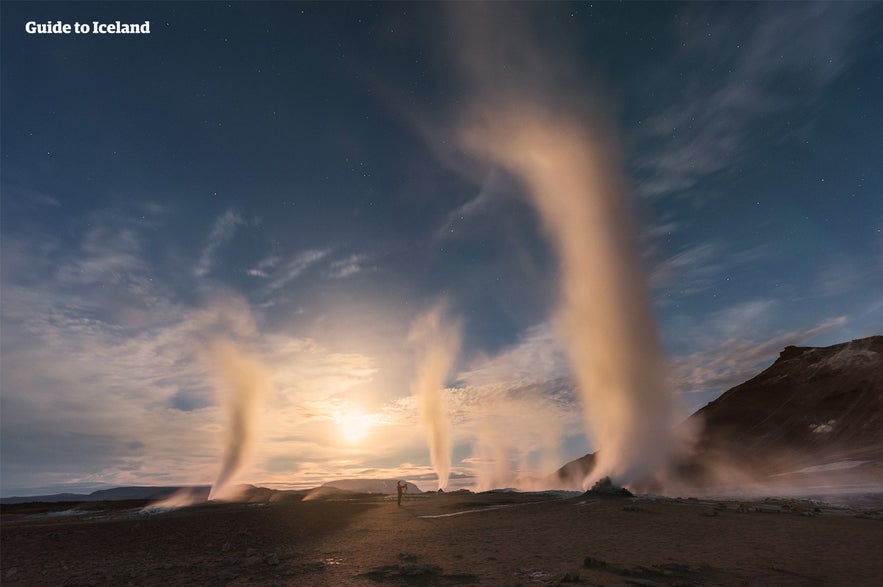
Some tours like the Askja Caldera and Viti Crater 4x4 tour, will take you to some of the craters in North Iceland where you can learn even more about the processes that occur during volcanic eruptions.
Meanwhile, this 45-minute airplane tour will let you see the Grimsvotn Crater, beneath the enormous Vatnajokull Glacier, from an unmatched aerial perspective.
Tours That Go Inside a Volcano
This tour inside the Thrihnukagigur Volcano lets you descend into a dormant volcano's vast, brightly colored magma chamber via elevator. It's incredibly rare for volcanoes to cool in a way that makes this possible, meaning this is a once-in-a-lifetime opportunity.
The vast majority of tours in Iceland usually include volcanoes; the country has so many of them that they are inescapable. All Snaefellsnes Peninsula tours, for example, are conducted in the shadow of the magnificent Snaefellsjokull Volcano.
Throughout all tours around Lake Myvatn, you'll be able to see parts of the Krafla Volcanic system, and Highland hiking tours will expose you to many more.
The 12-hour Fimmvorouhals hiking tour runs through the lava created by the most recent eruption of the Eyjafjallajokull Volcano. Here, you can find two of the newest craters in Iceland, the Magni Crater and Modi Crater.
Iceland Volcano Live Stream and Cam
You can watch a live stream of some of Iceland's volcanoes online from the comfort of your own home. Some of them are currently not live, so here are the ones that you can see right now:
-
View from Vogar town towards Grindavik and Sundhnukagigar Volcano
-
View from Vogastapi towards Grindavik and Sundhnukagigar Volcano
FAQ About Volcanoes in Iceland
Below are some of the most common questions surrounding volcanoes in Iceland.
Is It Safe To Travel to Iceland Right Now Due to Volcanoes?
Yes, Iceland is safe for travel. Authorities closely monitor volcanic activity, and any dangerous areas are restricted to keep visitors safe. Always check current advisories before planning a visit to any eruption site.
Is the Blue Lagoon Safe From Volcanic Activity?
Yes, the Blue Lagoon remains open, but recent eruptions on the Reykjanes Peninsula have occasionally led to temporary closures. Authorities assess risks daily and may close facilities for safety during heightened activity.
How Often Do Volcanoes Erupt in Iceland?
Historically, eruptions occur every few years on average. Since 2021, activity on the Reykjanes Peninsula has been more frequent than usual.
Can You Visit an Active Volcano in Iceland?
Yes, guided tours allow visitors to safely see recent lava fields and, when conditions permit, active eruptions. Access is strictly controlled and can change at short notice.
How Do Authorities Warn About Eruptions?
The Icelandic Meteorological Office monitors volcanic activity and issues alerts if an eruption is likely. Local civil protection will close roads or sites and provide instructions when needed.
Are Flights Affected by Volcanic Eruptions in Iceland?
While eruptions can impact flights, most disruptions are minor unless an ash cloud is produced, like during Eyjafjallajokull in 2010. Recent Reykjanes events have had little impact on air traffic.
The Future of Volcanoes in Iceland
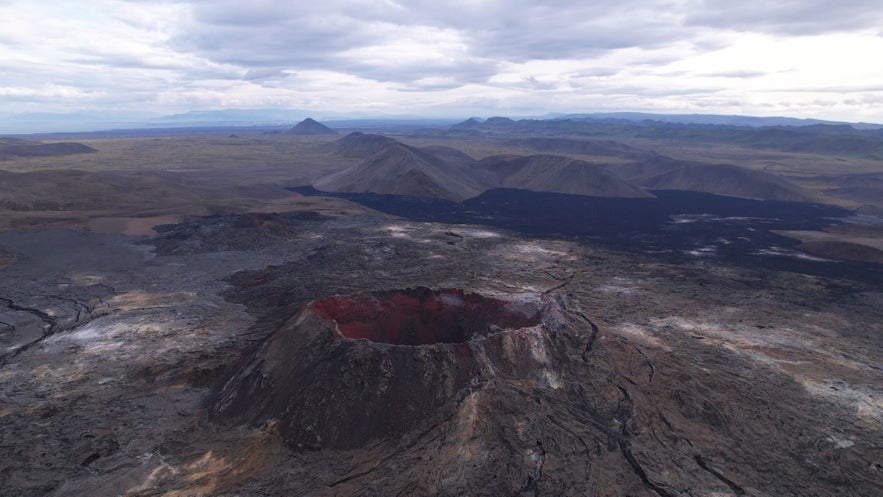 Iceland’s volcanoes remain active, especially on the Reykjanes Peninsula. After ~800 years of dormancy, this area has entered a new era of eruptions that could continue for decades.
Iceland’s volcanoes remain active, especially on the Reykjanes Peninsula. After ~800 years of dormancy, this area has entered a new era of eruptions that could continue for decades.
Visitors can witness this incredible natural activity firsthand through volcano tours, offering a safe and guided way to explore recent lava fields and learn about the island’s ever-changing geology.
Iceland's volcano tourism offers some of the most memorable experiences in the country. If you've explored Iceland's volcanoes before, what were your favorite experiences? Let us know in the comments below.

